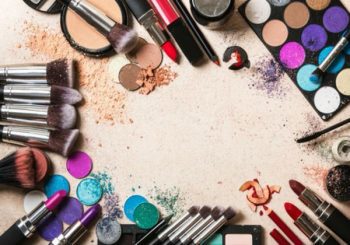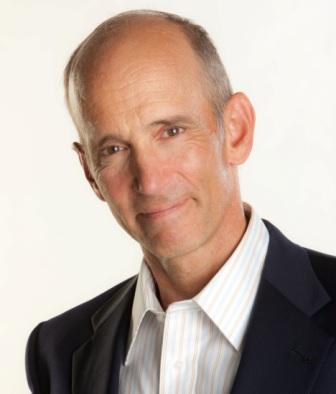Contributing writer for Wake Up World
Business Insider1 reports that the beauty industry reached a value of $532 billion in 2019 and is projected to rapidly rise in the coming years. Cosmetics and personal care products are benefiting from social media, targeted pricing and companies that are aiming at sustainable alternatives demanded by consumers.
In other words, it’s big business. Women have been using products to alter or enhance their appearance since at least the times of ancient Egypt.2 Despite continued growth in the industry, it’s important to note that just because you can buy it at the store, it doesn’t mean it’s safe to use.
In fact, the Environmental Working Group (EWG)3 says that legislation passed in the 1930s marked the last time federal supervision regulating personal care products was updated,4 “before most of the synthetic chemicals in use today were even invented.”
In addition to this well-known lack of oversight, the Food and Drug Administration allows products to be sold without basic safety testing of the ingredients.5 To investigate the extent of the problem, the EWG database was used to study how many personal care products and cosmetics may contain Teflon or other forms of the perfluoroalkyl chemicals (PFASs).
The product survey by EWG scientists6 revealed there were 13 different types of PFAS chemicals found in nearly 200 products across 28 brands of makeup, shampoo, sunscreen and shaving cream. However, the most common was Teflon, which showed up in 66 products involving 15 brands. It has become more than apparent that self-regulation isn’t working.
Self-Regulated Cosmetics and Personal Care Industry
Sharyl Attkisson of Full Measure7 conducted an investigative report in which she interviewed Melanie Benesh of EWG; Wynne Sisk, a hair stylist; Susan Collins, U.S. Senator (R-Maine); and Jay Ansell, vice president of the trade association Science for the Personal Care Products Council.
During the interview Benesh pointed out that consumers use multiple products and likely think they were regulated for safety. However, when the law passed in 1938 it was missing a section which would have given the FDA the authority to impose sanctions. She pointed out that the FDA does not have the jurisdiction to recall products or “to do a systematic look at their ingredients and what their long-term effects are.”
Sisk left her job as a hairstylist when she realized the hair straightening treatments she used on her customers were causing her eyes and throat to burn. The products didn’t have warning labels, which she later learned contained formaldehyde, noted to be a possible carcinogen. She lamented, “How in the world could you turn a blind eye to something that is so important?”
You may be surprised by Ansell’s answer. He told the reporter the industry is not unregulated, just not as regulated as food and drugs. In fact, he believes, “the industry can be proud of what it’s done, but people want to see some of these voluntary initiatives become mandatory.”
One challenge is that not everyone in the industry wants these changes. Despite support on both sides of the aisle in Congress, legislation to protect consumers has not passed. Many have been lobbied against by the industry as it would cost money to test products and find safer alternatives that offer the same or similar results.
Congress Wants the FDA to Have Power, but Industry Does Not
The most recent push to give the FDA teeth in regulating personal care products and cosmetics was in 2015 when Sens. Dianne Feinstein (D-California) and Collins introduced the Personal Care Products Safety Act.8 The bill was intended to strengthen the efforts to regulate ingredients.
It was not successful and was reintroduced on May 11, 2017. Again unsuccessful, Feinstein and Collins tried a third time on March 7, 2019. The bill requires the FDA to annually analyze ingredients in personal care products. Quaternium-15, a known formaldehyde releaser used as a preservative, was among the first five identified in the bill.9
The Campaign for Safe Cosmetics10 reports that women are exposed to 168 unique chemical ingredients from just 12 personal care products that are used on a daily basis. Teenagers are especially vulnerable to chemical exposures because their bodies are still developing. Teens use an average of 17 personal care products a day and are exposed to even more in their environment.11 Feinstein commented:12
“From shampoo and shaving cream to deodorant and make-up, every American comes into contact with personal care products every day. Families trust that these products are safe, but unfortunately many ingredients have never been independently evaluated.
Our bipartisan legislation, which has the support of numerous companies and consumer advocacy groups, would modernize FDA’s oversight authority and give consumers confidence that everyday personal care products won’t harm their health.”
What’s in Your Lipstick?
The FDA is charged with regulating the cosmetics industry, but the only real power it has is to approve color additives. This covers lipstick. However, it is not the entire product that requires approval, only the color additive.13
Lipstick may be an important barometer as it is the least expensive and currently the most popular cosmetic. Byrdie14 writes that 81% of women use lipstick but only 64% use foundation. In one survey of 300 lipstick-wearing women, 85% said it made them feel more confident. In the U.S., women buy about eight or nine tubes each year.
Lipstick can trace its roots back to ancient civilizations when lip color was popular with Egyptians, Babylonians and Greeks.15 The dyes and pigments used in modern products are made to appeal to consumers who follow current trends. It only makes sense that the lipstick applied to your lips will end up on your utensils and glasses, while some of it will be swallowed.
When this happens you’re swallowing chemicals added to improve wearability and durability, including methylparaben and propylparaben. These are frequently added as preservatives in the U.S.,16 but they’re banned in the European Union because they’re toxic.17
In fact, they’re so toxic that the Illinois Poison Center maintains information for parents whose children have swallowed more than a mouthful of lipstick.18 Janet Nudelman from the Campaign for Safe Cosmetics spoke to The Guardian, saying:19
“In the US it’s really a buyer beware situation. Cosmetics companies can use any raw material that they like and there’s no way to know if they are safe before they reach the shelves. The contrast with the EU is stark and troubling.”
Summer Sunscreen Adds Recent Fuel to the Fire
It bears repeating that sunscreen is widely overused. There are times when it’s wise to apply the product, but those are few and far between. For the most part you need to rely on sensible sun exposure and get out of the sun or cover with clothing the moment your skin starts to get light pink.
Recommendations for sunscreen use by the American Academy of Dermatology20 differ widely as they state you should use sunscreen “Every day if you will be outside” and “When outdoors, reapply sunscreen approximately every two hours, or after swimming or sweating, according to the directions on the bottle.”
The important strategy is to get enough sun on exposed skin to promote vitamin D production in your body without getting burned. A liberal application of sunscreen has more than one negative effect on your health.
As a matter of fact, many products contain more than a dozen active ingredients that may be damaging. In a proposed rule, the FDA21 states that of the 16 active ingredients used, two are generally recognized as safe and effective (GRASE), two have known safety hazards and, “There are 12 ingredients for which there are insufficient safety data to make a positive GRASE determination at this time.”
In other words, 87.5% of the ingredients used in sunscreen are either known to be hazardous or there isn’t enough information for the FDA to determine if they are safe. A current class action lawsuit filed against Coppertone alleges that calling their products “mineral based” is misleading.22
The argument is that “legitimate mineral-based sunscreens will contain up to 24 percent titanium dioxide or zinc oxide with no chemical ingredients.” However, those purchased by the plaintiff reportedly contained only 9.7% minerals and 12% active chemical ingredients. According to Top Class Actions:23
“The plaintiffs claim that the “Mineral-Based” products in question include: Coppertone Water Babies Mineral-Based Sunscreen Stick, Coppertone Water Babies Mineral-Based Sunscreen Lotion (in various sizes); Coppertone Kids Mineral-Based Sunscreen Lotion; and Coppertone Sport Face Mineral-Based Sunscreen Lotion.”
The plaintiff argues that the chemical ingredients have known harmful health effects and that the chemicals are absorbed through the skin. The lawsuit lists allergic reactions, skin irritation and endocrine disruption as some of the known problems associated with the active chemicals.
Protect Yourself From Toxins in Personal Care Products
One way to help promote change in the cosmetic industry is to participate in tracking adverse events from any chemical or product you use. The FDA24 maintains a database of information gathered from consumers.
You can choose to report the incident by filling out an online form, sending a fax, mailing in a complaint or calling 1-800-FDA-1088.
Remember that your skin is an excellent drug delivery system, as well-advertised nicotine patches demonstrate. This means that what you put on your skin is as important as what you put in your mouth.
Instead of buying the newest celebrity-endorsed personal care product or cosmetic, consider making your own bath and handwashing products without preservatives. Coconut oil is a healthy skin moisturizer with natural antibacterial properties that can double as a makeup remover.
Seek out safe products free of potentially dangerous chemicals using the EWG’s Skin Deep database.25 Be aware that while a product may be labeled “all natural” it can still contain harmful chemicals, so it is wise to check the ingredients and the rating in the EWG database.
Article sources:
- 1 Business Insider, July 9, 2019
- 2 Ancient History, May 4, 2017
- 3, 5 Environmental Working Group
- 4, 6 Environmental Working Group, Is Teflon in Your Cosmetics?
- 7 Sharyl Attkisson, February 18, 2020
- 8 GovTrack.US
- 9 Environmental Working Group
- 10 Campaign for Safe Cosmetics
- 11 ABC News
- 12 Dianne Feinstein
- 13 U.S. Food and Drug Administration
- 14 Byrdie, September 22, 2016
- 15 How Products are Made
- 16 U.S. Food and Drug Administration, Parabens in Cosmetics
- 17, 19 The Guardian, May 22, 2019
- 18 Illinois Poison Center
- 20 American Academy of Dermatology
- 21 U.S. Food and Drug Administration, FDA advances new proposed regulation to make sure that sunscreens are safe and effective
- 22, 23 Top Class Actions
- 24 U.S. Food and Drug Administration, How Consumers Can Report an Adverse Event or Serious Problem to FDA
- 25 EWG’s Skin Deep database
Originally published at mercola.com and reproduced here with permission.
Recommended articles by Dr. Joseph Mercola:
- High Blood Pressure Linked to Increased Risk of Dementia
- Cholesterol Does Not Cause Heart Disease
- CBD Has Unique Ability to Cross Blood-Brain Barrier
- Water and Homeopathy: Latest Discoveries at Science’s Cutting Edge
- Sugar Substitutes: What’s Safe and What’s Not
- Unveiling the Depths of the Human Psyche: Psychedelics May Unlock Parts of the Mind That Are Normally Inaccessible
- What Should Your Poop Look Like?
- The Endocannabinoid System and the Important Role it Plays in Human Health
- Magic Mushrooms May Hold Key to Long-Term Relief from Anxiety and Depression
- Scientific Links Between Processed Foods and Depression
About the author:
Born and raised in the inner city of Chicago, IL, Dr. Joseph Mercola is an osteopathic physician trained in both traditional and natural medicine. Board-certified in family medicine, Dr. Mercola served as the chairman of the family medicine department at St. Alexius Medical Center for five years, and in 2012 was granted fellowship status by the American College of Nutrition (ACN).
While in practice in the late 80s, Dr. Mercola realized the drugs he was prescribing to chronically ill patients were not working. By the early 90s, he began exploring the world of natural medicine, and soon changed the way he practiced medicine.
In 1997 Dr. Mercola founded Mercola.com, which is now routinely among the top 10 health sites on the internet. His passion is to transform the traditional medical paradigm in the United States. “The existing medical establishment is responsible for killing and permanently injuring millions of Americans… You want practical health solutions without the hype, and that’s what I offer.”
Visit Mercola.com for more information, or read Dr. Mercola’s full bio and resumé here.

If you've ever found value in our articles, we'd greatly appreciate your support by purchasing Mindful Meditation Techniques for Kids - A Practical Guide for Adults to Empower Kids with the Gift of Inner Peace and Resilience for Life.
In the spirit of mindfulness, we encourage you to choose the paperback version. Delve into its pages away from screen glare and notifications, allowing yourself to fully immerse in the transformative practices within. The physical book enriches the learning process and serves as a tangible commitment to mindfulness, easily shared among family and friends.
Over the past few years, Wake Up World has faced significant online censorship, impacting our financial ability to stay online. Instead of soliciting donations, we're exploring win-win solutions with our readers to remain financially viable. Moving into book publishing, we hope to secure ongoing funds to continue our mission. With over 8,500 articles published in the past 13 years, we are committed to keeping our content free and accessible to everyone, without resorting to a paywall.








